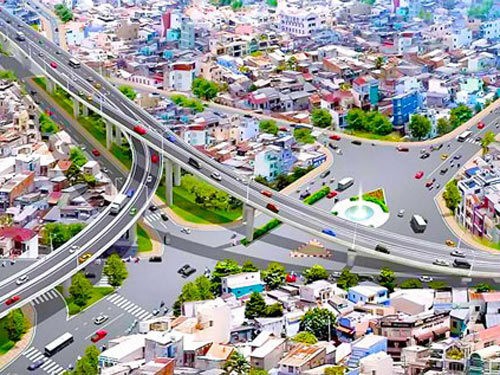 Illustrative photo: tapchitaichinh.vn Illustrative photo: tapchitaichinh.vn |
Specific directions for developing transportation infrastructure in the Mekong Delta
The Mekong Delta is implementing five important national transportation projects: the Can Tho-Ca Mau expressway, the Chau Doc-Can Tho-Soc Trang expressway, the Cao Lanh-An Huu expressway, the My An-Cao Lanh expressway, and the Rach Soi-Ben Nhat and Go Quao-Vinh Thuan section of the Ho Chi Minh road project. Of these projects, four have begun construction.
Since the beginning of his term in 2021, PM Chinh has visited the construction sites five times to inspect their progress. He congratulated 13 Mekong Delta provinces for completing an expressway network after 3 years in accordance with the 13th National Party Congress resolution. Mr. Chinh said that the Mekong Delta must have 600 kilometers of expressway by 2025 and 1,200 kilometers by 2030, with a special focus on the North-South and East-West expressways.
"This term’s most important task is to create an infrastructure breakthrough. The central and local governments must join hands do it comprehensively. We must get the projects back on track, or even ahead of schedule, while ensuring quality and caring for people's lives," said Mr. Chinh.
Building a modern, efficient North-South high-speed railway
Currently, Vietnam's North-South traffic axis has 3 road routes – National Highway 1, the Ho Chi Minh Road, and the expressway under construction – in addition to sea, air, and railway routes.
PM Chinh said that, to supplement other means of transportation, it’s necessary to consider a high-speed railway that can transport passengers and goods and serve national defense and security purposes when needed. The existing railways should also be upgraded.
Chairing a meeting of the Government last Thursday on the construction of the North-South high-speed railway, Prime Minister Chinh emphasized strategic innovation and efficiency. The goal is to complete more than 1,500 kilometers of high-speed railway on the North-South axis through 20 provinces and cities. The estimated construction time is 10 years. He called for a study to determine the shortest, most efficient route for trains designed to travel 350 kilometers per hour.
In the international integration process, systematic and modern transportation infrastructure plays an important role in connecting production with consumption, promoting economic exchanges between regions and countries, and creating conditions for socio-economic development. The Government’s management of highway and high-speed railway construction will open up new opportunities and expand development space for the whole country.